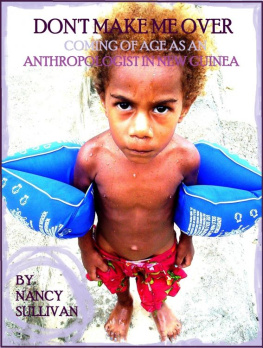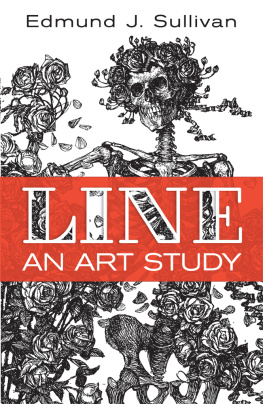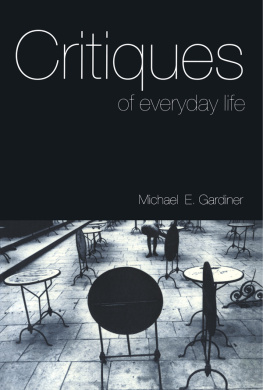The Geography of
the Everyday
The Geography of
the Everyday Toward
an Understanding
of the Given
Rob Sullivan

2017 by the University of Georgia Press
Athens, Georgia 30602
www.ugapress.org
All rights reserved
Set in 10.25/13.5 Minion Pro by Kaelin Chappell Broaddus
Printed digitally
Library of Congress Cataloging-in-Publication Data
Names: Sullivan, Robert E., 1952 author.
Title: The geography of the everyday : toward an understanding of the given / by Rob Sullivan.
Description: Athens : University of Georgia Press, [2017] | Includes bibliographical references.
Identifiers: LCCN 2017019751| ISBN 9780820351681 (hardback : alk. paper) | ISBN 9780820351674 (pbk. : alk. paper) | ISBN 9780820351667 (ebook)
Subjects: LCSH: GeographyPhilosophy. | Human geographyPhilosophy.
Classification: LCC G70 .s95 2017 | DDC 910/.01dc23
LC record available at https://lccn.loc.gov/2017019751
CONTENTS
ACKNOWLEDGMENTS
I want to thank John Agnew, Michael Curry, Lisa Kim Davis, and John McCumber for their guidance while I was a graduate student at UCLA, working on The Geography of the Everyday as my dissertation. I would like to thank Bethany Snead, Jane Curran, Thomas Roche, and especially Mick Gusinde-Duffy of the University of Georgia Press for supporting this project. Finally, I want to thank the anonymous reviewers, whose criticism and counsel contributed much to this book.
INTRODUCTION
Some things are taken for granted.
In much of Asia, people use chopsticks.
In many regions of Africa, people use their fingers, eating out of a common bowl.
In what is called the West, people use a knife, a fork, and a spoon.
These habitual ways of eating are everyday practices. They are given, assumed, unquestioned. In fact, they are so given that they disappear into the background. And yet what is background for one person may be completely alien to another. Many from Europe and the United States would find eating with their fingers from a common bowl to be bizarre and unappealing, and many an African would find eating without the use of fingers to be just as bizarre and unappealing, while many a person from Asia would think the combination of a fork, a knife, and a spoon to be unwieldy when a pair of chopsticks would do the job just fine.
Another example. In the United Kingdom, vehicles travel on the left side of the road. In most of the rest of the world, they travel on the right side. When a driver from out of country arrives in the UK and attempts to drive on the wrong side of the road, panic and disorientation can ensue.
The everydays givenness, along with its very capacity to fade into the background, make the everyday one of the trickiest elements of reality to analyze. How does the everyday construct itself? Can the everyday undo itself? In other words, can it become un-everyday? Or can something that is atypical become everyday? The everyday does change, sometimes slowly, sometimes even glacially, but change it does. For instance, same-sex marriage, while still perhaps not ordinary, is no longer so extraordinary that it is totally outside of the norm. In fact, as defined by law in many jurisdictions, it is well within the norms. Or a woman wearing pants is very much part of the given in this, the first quarter of the twenty-first century. But if we suddenly landed in the first quarter of the twentieth century, it would be very weird. So everyday mores, customs, and habits do change, though sometimes at a snails pace, and as they change the fabric of what is given changes with them.
What if you went to a nightclub and someone had homework and books spread out on the dance floor and was trying to study? Or, conversely, what if you went to a library and some of the patrons were dancing as if they were in a nightclub? These are the structural elements that the given and the everyday introduce into the world. Places are defined functionally, and the given follows after. This is perhaps most clearly visible in the structure of a house. Most of us do not cook dinner in our bedrooms, entertain guests in our bathroom, or sleep in our kitchens. In fact, if we engaged in such behavior, people would consider us disoriented: literally, out of orientation or out of place.
The given, then, helps us gear into the world in prearranged ways, allowing places to be constructed functionally so that certain actions can easily take place within them. We can challenge those prearrangements by engaging in behavior that is not everyday for the place in which we find ourselves. Practicing trombone at a lecture or screaming in a public bathroom are good examples. Yet the consequences of engaging in such behavior can be severe and even brutal. And, typically, we never think of such options, let alone engage in them, because we are set so solidly into the fabric of the everyday that anything outside of its bounds is not even considered.
You could say that the everyday is life or reality or that which is, but that might be casting too wide a net over the everyday. Accidents and insanity and crime are all part of life and reality, but they are not part of the everyday, that is, unless one is an emergency room nurse, a mental health care professional, a criminal, or a police officer. Yet the everyday does cover a lot of ground, if one thinks of it as normal behavior or as mundane reality or as places fulfilling their functions.
So why a book about the everyday?
And why one about the geography of the everyday?
It is my claim that geography is precisely what is needed to locate the everyday. Without a location, the everyday is always floating, never nailed down. Without geography and its primary component, place, nothing can be in place, and therefore everything by necessity escapes. And though there has been much written about the everyday from sociologists (for instance, Erving Goffmans The Presentation of Self in Everyday Life), anthropologists (such as An Anthropology of Everyday Life by Edward T. Hall), feminists (the Everyday Feminism blog), psychologists (such as The Psychology of Everyday Things by Donald A. Norman), and others, no one has yet nailed down the concept and given it a foundation. It is my hope that this book will at least go some way toward that goal.
How do I expect to achieve such a goal?
In the process of examining the everyday through a geographical perspective, I assemble the essential elements by which to conceive of the everyday. Time, space, history, geography, reproduction, the body, and the geographical mind are examined in separate chapters and brought into what I am calling the astructural structure by which I am investigating the everyday.
How to begin such a task?
Ill start testing my idea that geography can lead to a more comprehensive understanding of the everyday by looking at Ian Hackings essay Between Michel Foucault and Erving Goffman: Between Discourse in the Abstract and Face-to-Face Interaction. In this essay, Hacking takes Goffmans microsocial approach as a fillip to instigate an analytical apparatus combining Goffman with Foucaults macro-social approach: Between Foucault and Goffman: that suggests a middle ground between the French philosopher and the American sociologist. That would in turn imply that the two stand in opposition. Not so: they are complementary. One needs to stand between the two men in order to take advantage of both. There is a clear sense in which Foucaults analysis was top-down, directed at entire systems of thought... Goffmans research was bottom-upalways concerned with individuals in specific locations entering into or declining social relations with other people (Hacking 2004, 277278). The idea of using Foucaults analysis for a panopticon view upon the everyday while simultaneously using Goffmans for a ground-level view may be promising for a comprehensive analysis of the everyday.
Next page










